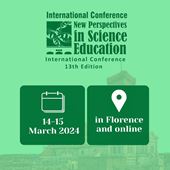Neuroscience and Education
Djoudi Ali, University of Djilali Bounaama Khemis Miliana (Algeria)
Abstract
The emerging discipline of educational neuroscience stands at a crossroads between those who see great promise in integrating neuroscience and education and those who see the disciplinary divide as insurmountable. However, such tension is at least partly due to the hitherto predominance of philosophy and theory over the establishment of concrete mechanisms and agents of change. If educational neuroscience is to move forward and emerge as a distinct discipline in its own right, the traditional boundaries and methods must be bridged, and an infrastructure must be in place that allows for collaborative and productive exchange. In the present paper, we argue that school psychologists have the potential to fulfill this need and represent important agents of change in establishing better connections between research and practice. More specifically, we use the National Association of School Psychologists (NASP) (2020) Domains of Practice to highlight several areas where school psychology can actively support forging connections between neuroscience and educational practice. School psychologists represent untapped potential in their knowledge, skillset, and placement to serve a vital role in building the bridge between neuroscience and education. so , why it is imporatnt to join between neuro-sciences and etducation ? what kind of impacts may exist between neurosciences and education ? how educational institues should take into consideration the relationship betwwen them?
|
Keywords |
Neuro-Science - Education Research - Psychology |
|
References |
American Psychological Association (APA) (n.d.). What is the Difference Between Educational Psychology and School Psychology. Bowers, J. S. (2016). The practical and principled problems with educational neuroscience. Psychol. Rev. 126, 600–612. doi: 10.1037/rev0000025 Bramlett, R., Cates, G. L., Savina, E., and Lauinger, B. (2010). Assessing effectiveness and efficiency of academic interventions in school psychology journals: 1995–2005. Psychol. Schools 47, 114–125. Brown, A. L. (1992). Design experiments: theoretical and methodological challenges in creating complex interventions in classroom settings. J. Learn. Sci. 2, 141–178. doi: 10.1207/s15327809jls0202_2 Bruer, J. (1997). Education and the brain: a bridge too far. Educ. Res. 26, 4–16. doi: 10.3102/0013189x026008004 Bruer, J. T. (2006). Points of view: on the implications of neuroscience research for the science of teaching and learning: are there any? CBE Life Sci. Educ. 5, 104–110. doi: 10.1187/cbe.06-03-0153 Brunmair, M., and Richter, T. (2019). Similarity matters: a meta-analysis of interleaved learning and its moderators. Psychol. Bull. 145:1029. doi: 10.1037/bul0000209 Carew, T. J., and Magsamen, S. H. (2010). Neuroscience and education: an ideal partnership for producing evidence-based solutions to guide 21st century learning. Neuron 67, 685–688. doi: 10.1016/j.neuron.2010.08.028 |
 New Perspectives in Science Education
New Perspectives in Science Education





























